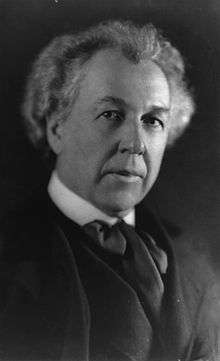Zimmerman House (Manchester, New Hampshire)
The Zimmerman House is a historic house located at 223 Heather Street in Manchester, New Hampshire. Built in 1951, it is the first of two houses in New Hampshire designed by Frank Lloyd Wright (the other is the Toufic H. Kalil House, built in 1955 on the same street), and one of a modest number of Wright designs in the northeastern United States. The house was built for Dr. Isadore Zimmerman and his wife Lucille. The house is now owned by the Currier Museum of Art because of the Zimmermans' decision to donate the home to the public after their death. The museum provides tours of the building, which is the only legal access to the grounds. It was listed on the National Register of Historic Places in 1979.[1]
Zimmerman House | |
 | |
 Location in New Hampshire  Location in United States | |
| Location | 223 Heather St., Manchester, New Hampshire |
|---|---|
| Coordinates | 43°1′18.19″N 71°27′46.34″W |
| Area | 1 acre (0.40 ha) |
| Built | 1951 |
| Architect | Frank Lloyd Wright |
| Architectural style | Prairie School |
| NRHP reference No. | 79003790[1] |
| Added to NRHP | October 18, 1979 |
Description and history
The Zimmerman House is located in a residential setting in northern Manchester, at the southwest corner of Heather and Union streets. It is a single-story structure, set on a floating concrete slab.[2] It is organized around a large L-shaped central chimney, and covered by a deeply overhanging roof. The rooms are arranged in a single line, except[3] with an open carport at one end. The interior is largely finished in cypress wood.
The house was designed in 1950 by Frank Lloyd Wright in his Usonian style for Dr. Isadore and Lucille Zimmerman. It has two bedrooms, is based on a four foot module, and is constructed of red glazed brick with Georgia cypress trim (less expensive than tidewater cypress). John Geiger,[4] then an apprentice in Wright's Taliesin Fellowship, was sent to New Hampshire to supervise the construction of the Zimmerman house. He is responsible for the completion of the project and much of its final changes for the clients.[5] Wright redesigned the house around a rock just outside the front entrance.[3] Wright's design extended to include the interior furniture and furnishings. This includes a musical quartet stand,[6], as well as the mailbox. Wright also specified the plantings for the garden.[2]
The property was maintained by the Zimmermans according to Wright's plan, and was donated to the Currier Museum of Art in 1988.[7] The museum offers tours of the property. They begin at the museum (150 Ash Street in Manchester), which provides shuttle service to the house, in order to minimize traffic in the residential neighborhood. No other access to the property is permitted.
References
- "National Register Information System". National Register of Historic Places. National Park Service. July 9, 2010.
- "NRHP nomination for Zimmerman House". National Park Service. Retrieved 2014-05-15.
- Bleiberg, Larry (June 7, 2015). "10 Great: Frand Lloyd Wright Homes". USA Today.
- https://jgonwright.net/ Archival website originally created by John Geiger (deceased)
- "The Zimmerman House". JG on Wright. Retrieved January 10, 2020.
- http://www.steinerag.com/flw/Artifact%20Pages/PhRtS333Music.htm
- "Zimmerman House". Currier Museum of Art. Retrieved 2018-06-25.
- Storrer, William Allin. The Frank Lloyd Wright Companion. University Of Chicago Press, 2006, ISBN 0-226-77621-2 (S.333)
External links
![]()
- The Zimmerman House on the Currier Museum Website
- The Zimmerman House in the book New Hampshire Architecture by Bryant Franklin Tolles
- Zimmerman House - Manchester, NH - Frank Lloyd Wright Designed Buildings on Waymarking.com

